The first section of the Cheng Man Ching form (17 moves) is demonstrated from the front and back
Original article and pictures take s.ytimg.com site
The first section of the Cheng Man Ching form (17 moves) is demonstrated from the front and back
Join our email list for special offers and notifications when we go live: http://taichi.school/
Like us on Facebook: https://www.facebook.com/TaichiQigong...
Follow us on Twitter: https://twitter.com/Taichi_School
We got asked to do a little video on some fan basics (opening and closing etc) for the form we teach. First time we have done a tutorial and it was all on the spot so we hope it's helpful! HERE IS A LINK TO THE FULL TAI CHI GONG FU FAN FORM AS TAUGHT BY GRANDMASTER GOU KONGJIE: https://youtu.be/XiR4kxjLSP4
Featuring Paul Lockyer of Natural Elements. Chen Style Tai Chi 12th Generation Disciple of Grandmaster Gou Kongjie. Peace
www.naturalelementsgroup.co.uk
Introduction to the Ving Chi Tai Chi Chair Form for practicing Tai Chi and Qigong
from a chair or seated position.
This form of Tai Chi is great for:
Those in a wheelchair
Seniors
Stroke, Parkinsons, osteoporosis, arthritis, fibromyalgia and many other ailments
Mediation
At home or the office For more information, got to www.VingChi.com
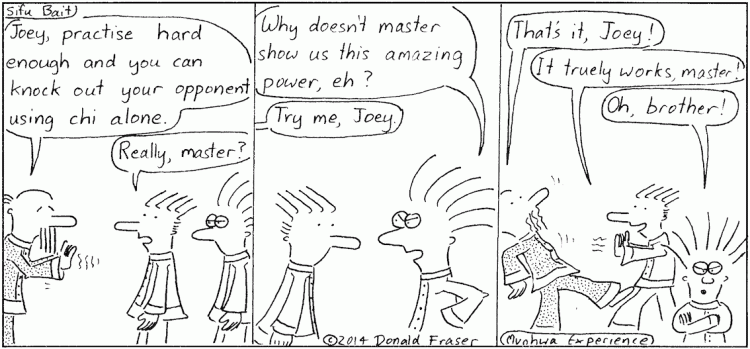







I’ve learned tai chi forms from two different schools -one was the late Erle Montaigue’s Yang style, and the other was Feng Zhiqiang’s Hunyuan chen style -both were very meticulous about the forms but both also taught qigong, zhan zhuang, other supplementary exercises (e.g. fangsong gong, jiben gong etc…) and push hands. If your tai chi school only teaches forms, you’re probably not at a very good school, and your definitely not learning how to apply the forms in a self-defence context.

The thing I loved about the branch of Erle’s tai chi that I was at was the fact that EVERY lesson had push-hands -it was simply a given, because developing the structure and maintaining your centreline and ‘peng’ under pressure can take years -(I haven’t done it nearly long enough).
Starting with the basic one-armed push hands…
The potential for advanced push hands…
Next week I am going to start releasing a short series of videos about an upcoming program on the Old Yang Tai Chi Style and about the true potential of tai chi in your life and for our society.
In this email/post I wanted to give you some background information, tell you more about the origin of the Old Yang Style of Tai Chi and WHY I think it so important for entire tai chi field.
Just like a computer has hardware and software, tai chi could also be said to have software or source code. Traditionally the original source code of tai chi was only taught to a select few. Over the years the source code changed, was modified and segments of what was in the original form were lost.
I want to state that this is considered true by many high level practitioners and is not just my personal opinion.
Two reasons this occurred was because of the Cultural Revolution in China that caused these arts to go underground and because in modern times fewer individuals chose this as their primary occupation or had the required time to practice.
To track the original source of the Old Yang Style of Tai Chi we have to look back to the person who brought tai chi out of the Chen village.
The Chen Village is historically considered the birthplace of tai chi. The three most popular styles of tai chi are Chen Style, Yang Style and Wu Style. All of these are family names. (FYI...Yang style is not related to the Taoist concepts of Yin and Yang, but is the family name of the founder of that style.)
Now although the Chen Village is where tai chi is considered to have developed, the Yang style (not the Chen style) is the most popular.
Why is this?
The main reason is that it is only in the past 20 years that the Chen style has been taught outside the village. Historically it was NOT taught publicly, but now that teachers are traveling and teaching more openly it is gaining popularity.
Within the Chen Village there was a servant name Yang Lu Chan. He pretended to be deaf and mute, silently learning and practicing every night when others went to sleep. This is an extraordinary story.
Yang Lu Chan brought tai chi out of the village and spread the teachings around China and eventually to Beijing. If you want to learn more about the birth of Yang Style tai chi, I wrote a previous blog post about its founder Yang Lu Chan here:
http://www.taichimaster.com/2010/10/06/birth-of-yang-style-tai-chi-chuan-yang-lu-chan/
Yang changed what was taught in the Chen village and created what we know as the Old Yang Style of Tai Chi. Yang Lu Chan is the original source code for what we know as Yang Style tai chi.
His teachings are now considered the ORIGINAL or OLD Yang Style of Tai Chi, but nobody knows exactly what he did because this was the era before video recording. He only taught the emperor’s guard, the aristocracy and a select few disciples to a high level of excellence.
Yang Lu Chan taught three people who were considered the BEST students. The first two were his kids Yang Chien Hou and Yang Pan Hou. The other was Chen You, whose name was later changed to Wu Chen You and whose son was Wu Jian Chen of the Wu Style of Tai chi.
In essence the Wu Style is a smaller frame version of the Old Yang Style. Let me say it another way, the Wu Tai Chi Style came from the original source code from the Old Yang Style. The importance of this connection is critical. In the upcoming video I talk more about this connection.
When you are looking to find the original source code for what is considered Old Yang Style, you have to look to these three people (his two kids and Wu Chen You) and their lineages.The three students of Yang Lu Chan taught what could still be called the Old Yang Style, but by the third generation of teachers the styles started to morph and change. The forms were interpreted differently.
This is where the Old Yang Style morphs into what we now call the New Yang Style of Tai Chi. The forms diversify from the original form in many ways, both externally and internally. There are dozens and dozens of different Yang forms.
The reason we want to find the original code is because it is a pure stream for the higher potentials of tai chi.
The inner energetics or neigong of tai chi are one of the most valuable practices you can cultivate in your body and your life.The smaller frame forms of tai chi have as much or even more power than the larger forms, but with the larger forms you can see what is happening more clearly.
This is even more so with outer form of the Old Yang Style because is makes many of the internal energetics very explicit and it is very precise if you know what to look for and how to 'see'.
This means that every movement is deliberate in the way it moves the qi throughout the body.
Why is this important? Tai chi is powered by internal energetics. This is true for BOTH its health and martial art applications.
You might ask, what are these internal energetics and how do we learn them?
Here is a quick learning progression in tai chi in general.
Classically you start by learning the physical movements and body alignments. Then you slowly start to fold in the energetics. Just as you have external alignments, you also have internal alignments, which are physically invisible.
In the intermediate stage, the energetics become more detailed and you slowly put the techniques into the form. Then you start to get into application tracks because everything up to this point is general or learning the basics.
The type of application - healing, martial arts or meditation - will determine how and what you do.
What is important about the Old Yang Style is it will help you learn what is inside tai chi. It helps you take what is in the dark into the light so that you can know what to focus on and how to activate it in your body.
Here is a quick overview of the different areas of study that you can look at within tai chi:
All of this makes up the original source code of tai chi.This is not an intellectual study however, but rather a study of how energy specifically moves in the body.
The original tai chi forms are optimized to have the biggest health and energetic results on your body. This is why learning tai chi can be both fun and addicting because after you do your practice your body feels better, vital and more alive.
This is not by accident but is very conscious and intentional.
I am excited to be sharing with you this upcoming video series and telling you more about this in the future. What was once secret is now openly available for everyone to study and learn.
Be on the lookout for the next video soon...
Live the Tao,
Bruce Frantzis
Founder, Energy Arts

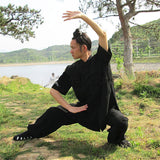
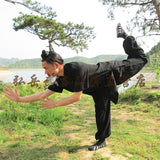
Traditional Tai Chi Uniform for daily Training
Both are very flexible and breathable fabrics.
Unisex - Men and Women can wear this.
The Uniform includes Shirt and Pants.
*It is required to submit your measurements!

Note: Originally published as “A Servant in the Masters House” on the Energy Arts Website.
In ancient China, the Chen village kept tai chi chuan a closely guarded secret for over a century and refused to teach it to a single outsider. Having a superior martial art such as tai chi chuan enabled the village to stay safe from marauding bandits and securely conduct business without their goods being stolen or having to pay protection money. The villagers developed the internal martial art of tai chi chuan to a very high level.
In the nineteenth century, an immensely talented and motivated young man with a great love of internal martial arts, by the name of Yang Lu Chan, was told by his teacher that if he wanted to progress, he needed to go to the Chen village to study tai chi chuan.
Yang went to Chen village, asked to be admitted and was summarily refused. The tai chi chuan teachings were secret and forbidden to non-family members. Yang devised an immensely disciplined strategy. Posing as a deaf-mute, he obtained work as a servant in the house of the teaching master.
A diligent and cheerful worker, over time he became trusted enough to be given free reign of the house, including the keys to the locked doors surrounding the tai chi chuan training hall. Keeping himself hidden, he secretly watched the classes and practiced late into the night when everyone was asleep, no doubt overcoming years of sleep deprivation to succeed.
At the time, the Chen style tai chi chuan master had a dilemma. The next generation of the village was resting on the family laurels and not training sufficiently. The tai chi master was greatly concerned and saddened, and feared that his family’s art of tai chi chuan would be lost. One night Yang was caught watching tai chi chuan. He was dragged down to the tai chi chuan training hall. The students, not wishing their position to be usurped, demanded his execution for breaching security-a reasonable response in nineteenth-century China given the circumstances.
Speaking for the first time, future Tai Chi Master Yang profusely apologized. A shocked Chen master then pondered the implications of the discipline required to maintain this deaf-mute act for years. Yang begged the Chen master to be allowed to learn his art of tai chi chuan. He then challenged his would-be executioners and, one by one, using their own tai chi techniques, Yang managed to defeat them.
The tai chi master, who was truly searching for a good student to pour his knowledge into, wondered what Yang could do if he got the full meal rather than only the crumbs. After a psychologically grueling three-day test of character, Chen accepted Yang for what ultimately became an 18-year tai chi apprenticeship. After completing the full tai chi chuan training, Yang left the village with his teacher’s blessing to go out into the world and teach however he thought fit.
So if you are already doing tai chi, keep practicing as Yang did. Keep focusing on going inside and becoming aware of what’s inside. All you’re going to find is what’s there. And, make sure you take the time to find out about your teachers because it can mean the difference in how far you advance in a subject.
By the way, after receiving his tai chi master’s blessing, Yang traveled around and challenged China’s best internal and external martial arts exponents. He convincingly defeated all of them without injuring anyone-a sign of truly remarkable skill.
Gradually he found his way to the imperial capital Beijing, did the same there, and became the teacher of tai chi chuan of the imperial guards and many aristocrats, something that can be linked to the spread of tai chi in China. Although most wealthy aristocrats were not fighters, they found that the tai chi’s energy work did wonders for their health and general vitality…maybe you will too.
Stay good,
Bruce
I truly enjoy watching TED talks. It’s so much better than watching another episode of Big Bang Theory… So I searched for what I think are the best TED talks somehow related to Taijiquan, Qi Gong and Meditation.
Watch this very moving talk about how this woman prepares for Alzheimer. And yes, Taijiquan is one of the things she does:
Learning and doing Taijiquan is a slow thing. And living in a fast world doesn’t kame it easier. However, more and more people know how wonderful it is to be slow sometimes. This is Carl Honoré talking about the praise of slowness:
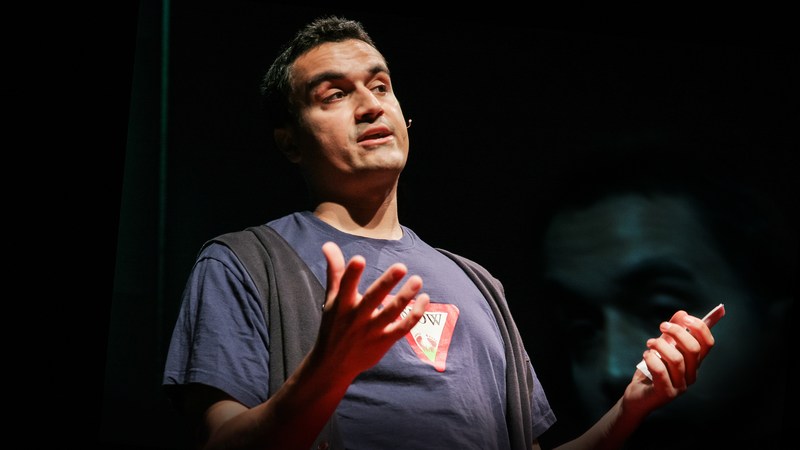
If you still want to speed up your learning curve, And just imagine you could do this: plug some patches on your master’s body, connect yourself and then learn the Taijiquan movements – does that sound too Sci-fi-ish? Have a look at this TED talk:
Well, until that neuro science technology is further developed, you need to learn the Taijiquan and Qi Gong movements all by yourself. I like how open this speaker is about how boring it can be in the beginning to learn Taijiquan or meditating:
In case you want to get up and move a bit, have a look at this talk and do a small Qi Gong exercise:
Now let’s move on to meditation. You can find a more scientific look at how meditation changes the brain in this TED talk:
However, I prefer the next talk about “the art of stillness”. It has some really wonderful quotes. My favorite is: “Going nowhere (= sitting still) is at least as exciting as going to Tibet”:
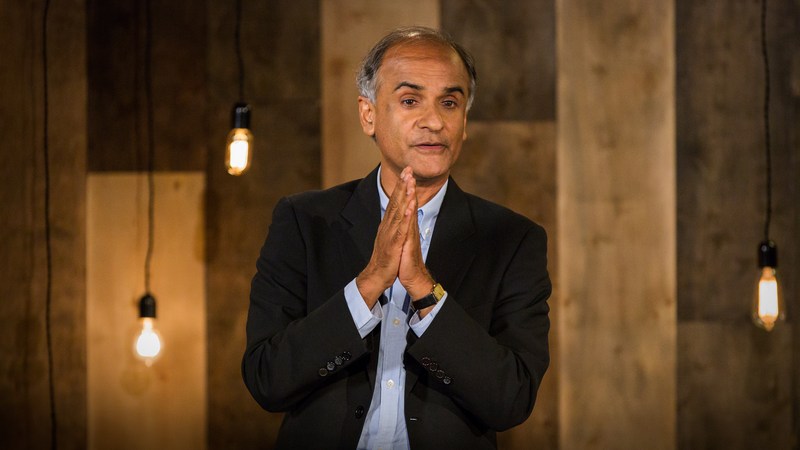
I hope you enjoyed my best TED talks about Taijiquan, Qi Gong and meditaion. And I welcome you to get up now and do a Taijiquan form or some Qi Gong exercises, meet your Qi-friends or meditate, eat well and move naturally!
Happy Qi
Angelika
If you still want more and would like to know more, have a look at Chungliang Al Huang explaining Taiji or YinYang philosophy:

This pose, also known as the snake or cobra’s pose because it mimics (raising the head along with chest ) the look of a raised hood of a cobra (with the rest of the body laying down imitating the body of the snake).

This asana is one of the best asanas for the back including the spine. Monitored breathing is crucial in this and every other asana. Old age limits the flexibility of the back; this is why the bending and the stretching moves in this asana are great ways to grow the flexibility and tone of the back, so the back won’t give out when we get to that time of our lives.
The spinal column gets toned from the stretching done in this pose; this stretching also happens to tone the abdominal muscles too. Dormant muscles such as the uterine muscles and, organs like the ovaries get toned while doing this pose. It remains one of the best poses, acting as a medicine in cases such as leucorrhoea and wet-dreams. The raising of the chest helps to firm up the chest and bust.
This raising hood position also contributes to enriching blood supply to the entire body because of the pressure it puts on the adrenal glands. Other organs located next to adrenal glands such as the liver also benefit from this pose. The asana resolves problems of irregular menstrual cycles. This asana puts pressure on the digestive system and muscles helping to relieve constipation.
Regularly doing this asana helps with acute gas problems. The stretching of the spine helps individuals who suffer from back problems such as slip disc by giving the spinal column proper toning. The continuous practice of this asana solves your backache problems.
Quieres aprender como revertir la diabetes o como curar la diabetes ? si es asi tenemos un video que tienes que ver:
https://www.youtube.com/watch?v=znfJ9...
Deseas poder revertir la Diabetes - Si es asi por favor ingresa al siguiente enlace:
http://cuidesudieta.com/vi-sin-diabetes
Problemas o dudas en adquirir el destructor de la diabetes tipo 2 ? entonces ingresa al siguiente enlace para saber como adquirirlo correctamente:
http://cuidesudieta.com/descargar-des...
Quieres formar parte de nuestra gran famlia ? si es asi te invito a suscribirte si aun no lo haz hecho haciendo clic en el siguiente enlace:
http://cuidesudieta.com/suscribirte
Deseas ver muchos mas videos sobre la diabetes por favor ingresa al siguiente enlace:
http://cuidesudieta.com/mas-videos-co...
Deseas leer nuevos e interesantes articulos relacionados con la diabetes? tambien tenemos un blog donde puedes encontrar esa informacion:
https://www.destructordeladiabetestip...
Tienes alguna duda sobre nuestro sistema para revertir la diabetes? puedes hacerlo directamente a nuestra pagina de Facebook:
https://www.facebook.com/Vivesindiabe...
Quieres aprender a revertir la diabetes?
Tenemos un video para ti:
https://www.youtube.com/watch?v=znfJ9...
No olvides compartir nuestro video, sin duda eso ayudara a muchas personas con diabetes
Become a Tai Chi Master in 5 Steps! These are my 5 Secrets to being the Ultimate practitioner of Tai Chi, Tai Ji Quan, and Qigong:
#1: Warm up Tai Chi Postures
#2: Practice of Solo Form
#3: Qi Gong Practice
#4: Stillness Meditation
#5: Tai Chi Fighting and/or Self Defense
Hit "SUBSCRIBE", Click "Like", Leave a Comment Below, Enjoy:
***"LIKE" Our Facebook Page Here: https://www.facebook.com/JakeMace.TaiChi
***"Follow" Jake Mace on INSTAGRAM at "JakeMaceTaiChi"
***"Follow" Jake Mace on Twitter at "KungFuUniverse"
***Order a DVD Below! Thanks! :)
ORDER JAKE'S YANG TAI CHI DVD HERE, (Free Shipping in USA):
http://www.shaolinarizona.com/Site_2/...
ORDER JAKE'S IRON BONE DVD Here (Free Shipping in USA):
http://www.shaolinarizona.com/Site_2/...
Please subscribe to my channel and my vlog channel! I make new videos here everyday and make vlog's about the Martial Arts way of life.
-Jake Mace
Look me up for a friend request on Facebook: http://www.Facebook.com/JakeMace.TaiChi
Visit Us At:
http://www.PhoenixLongevityArts.com
View all our current DVD's available at:
http://www.shaolinarizona.com/Site_2/...
Here we present a complete set reminder for the 108 move set.
You can download our Awareness Tai Chi 108 Move Set List here:
http://www.theawareness.website/freeb...
In the beginning, we're so focused on learning the Tai Chi set, we tend to get mental overload and soon begin to forget the steps learned earlier on.
Kevin's here to guide you through the entire 108 moves, step-by-step.
On our Facebook page, we have 19 separate videos as follows:
Video 1 moves 1-3 .......... Video 11 moves 49-55
Video 2 moves 4-6 .......... Video 12 moves 56-62
Video 3 moves 7-13 ........ Video 13 moves 63-69
Video 4 moves 14-17 ...... Video 14 moves 70-74
Video 5 moves 18-24 ...... Video 15 moves 75-82
Video 6 moves 25-29 ...... Video 16 moves 83-89
Video 7 moves 30-33 ...... Video 17 moves 90-95
Video 8 moves 34-35 ...... Video 18 moves 96-101
Video 9 moves 36-42 ...... Video 19 moves 102-108
Video 10 moves 43-48
SHARE THIS VIDEO:
https://youtu.be/K69RuEIZYaM
SUBSCRIBE FOR MORE AWARENESS HERE:
https://www.youtube.com/channel/UC2AQ...
----------------------------------------------------------------------------------
Follow Us
OUR FACEBOOK:
https://www.facebook.com/TheAwareness...
OUR TWITTER:
https://twitter.com/KSAwareness
OUR GOOGLE+:
https://plus.google.com/+TheAwareness...
WEBSITE:
http://www.theawareness.website
Get the new EP here: https://lnk.to/AviciEPAvicii
Click here to enter a competition to win Avicii merchandise: https://lnk.to/Aviciimerchcompetition
|
|